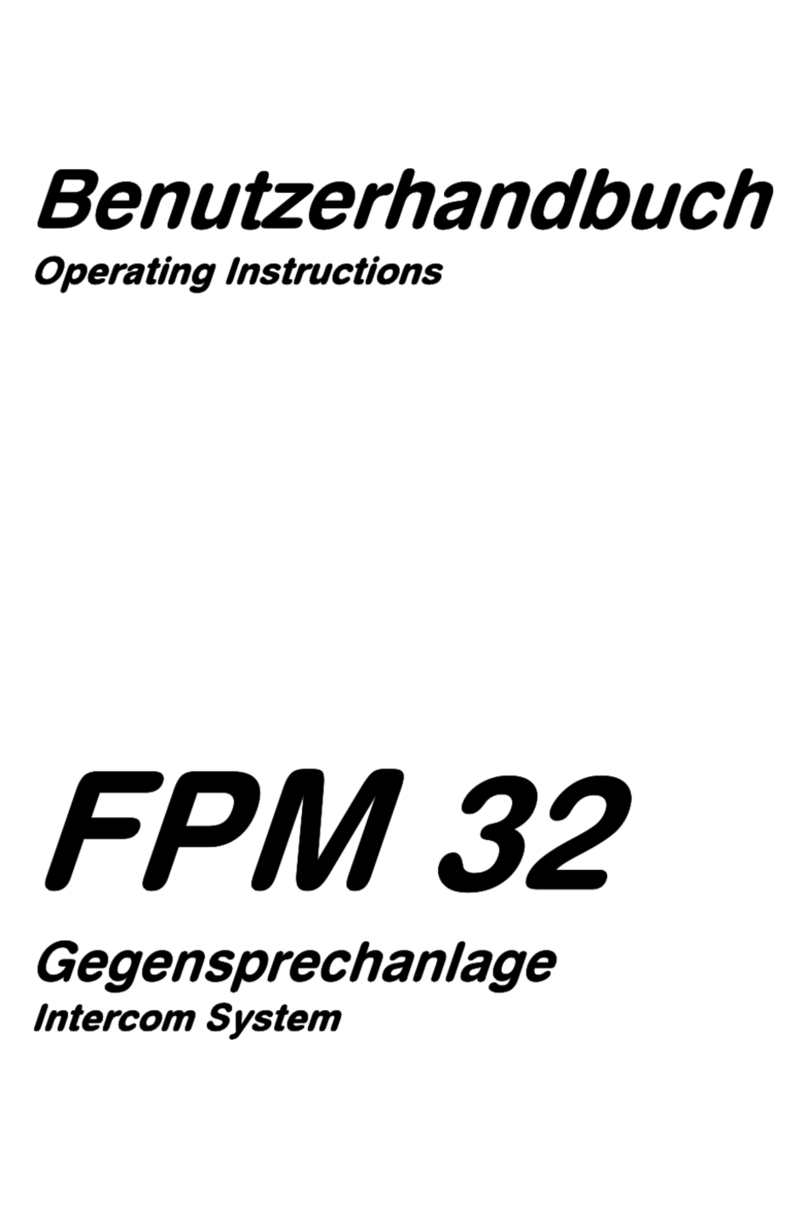© SCHAEFER GmbH Installation Instructions FPM 32
6
2. Addressing the participants
All participants in the system are addressed. Each handset gets an address between
0 and 15. The handset with the address 0 is automatically the one with exchange
function and gets some special authority. Address 1 is the first extension, address 2
the second etc.
If the remote emergency call system FPM 8800 is used the address „extension 15“
must not be addressed as this is reserved for the system FPM 8800.
Addressing of the handsets is made by calling the „adjustments“ mode and
addressing of the hands-free speakerphones is made by a dipswitch.
For making the new addresses known to the system the power supply must be
disconnected after each change of address or a system check must be started from
the exchange.
The exchange automatically starts a system check after the power supply is
connected or when power supply exists again after a power failure. After installation
you may start a system check to check the connection to the other participants. If
participants are missing in the list or if you get the message “no answer” the
connections to the respective participants must be checked.
3. Adjustments
Please read this chapter carefully. Wrong programming of the addresses or wrong
assignment of the hands-free speakerphones can have a negative effect on the
function of the system.
3.1 Calling the adjustment mode
Wait until the device changes to the power save mode (display is inactive). Then put
in the four figures 2, 4, 6, 8. In the display the date of the software is now indicated.
Then press the key „5“ for getting to the „adjustments“ mode.
3.2 Language
In the first item the language is chosen.
The display indicates:
Choose either German or English messages by aid of the keys “ ” or “ # ”.




























